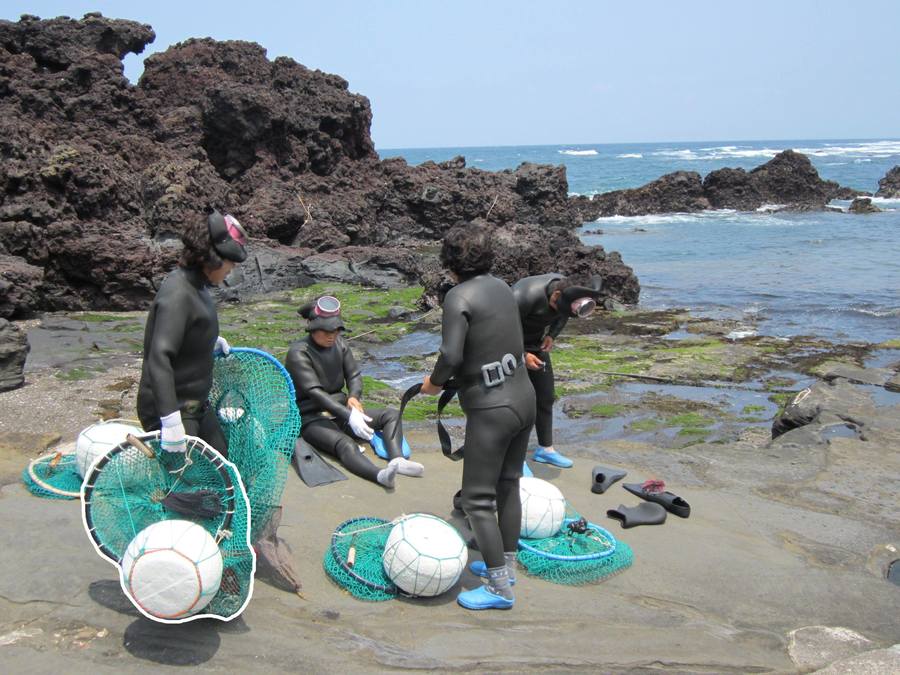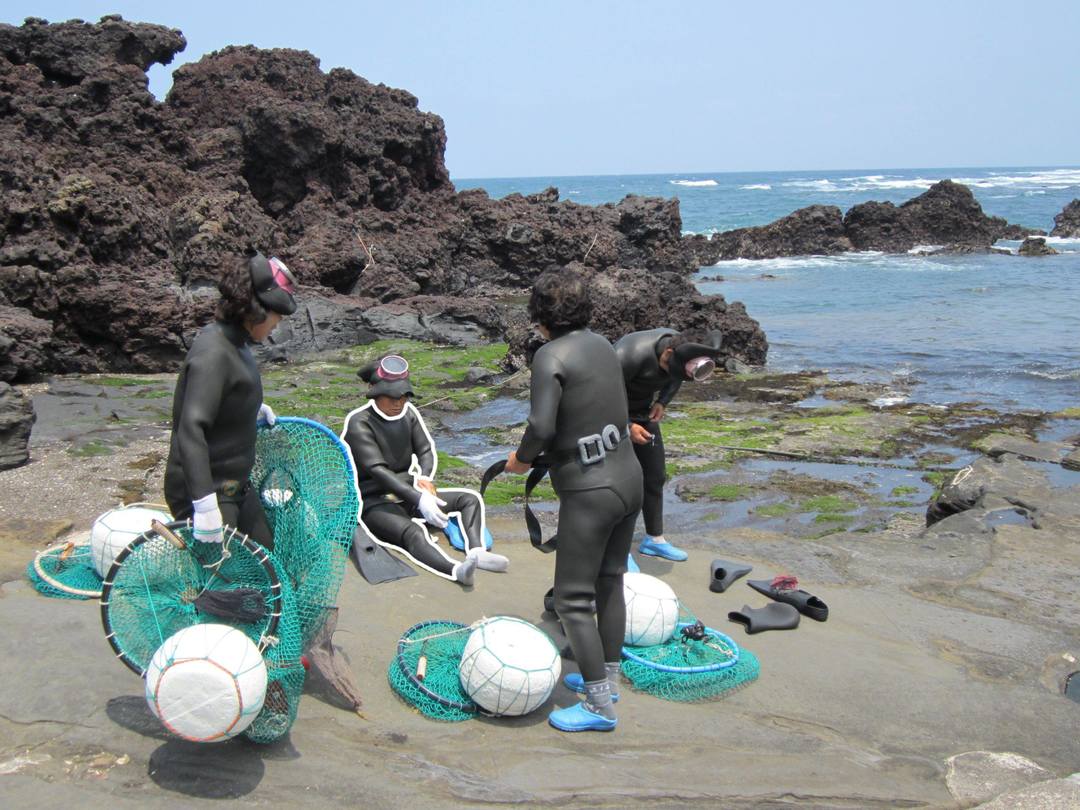The Haenyeo's equipment
0

0







The Haenyeo's equipment
Historians have found traces of the Haenyeos in writings dating back to the Joseon Dynasty (1392-1910). Discover the evolution of their equipment over time.
Browse the picture

The flotation device called a "tewak" is left on the surface of the water during the dive. It is connected to a net suspended below the device, where the Haenyeo store their harvest until the end of the day.
the tewak
In the past, the Haenyeo wore light clothing: a simple white linen outfit (shorts, a camisole shirt for the top and a turban on the head). Now they have a more complete outfit, including a neoprene wetsuit that keeps out the cold.
The time the Haenyeo spend in the water depends on the season.
Before the "new" wetsuits came out and they only wore cotton suits, the Haenyeo could only stay in the water for a few hours during the winter months. After an hour, they would get out of the water and sit by the fire for 3 to 4 hours to dry off. After this break, they would go back into the water for another hour.
During the summer months they would stay in the water for up to 3 hours before taking a break. But with the advent of the new suits, the Haenyeo found that they could stay in the water for 5 to 6 hours, even during the winter.
the wetsuit
From the 1970s onwards, the Haenyeo's diving equipment changed. They wore a rubber suit imported from Japan but also a pair of fins called "Oribal".
the flippers
Haenyeo divers wear weights around their waist to make diving easier. The weight of the belt depends on the thickness of the suit used and the weight of the diver. The thicker the wetsuit, the heavier the belt should be.
In the past, the Haenyeo used to fill bags with stones to make diving easier.
the "Yeoncheol" belt
The first protective glasses would have been used in the late 19th or early 20th century. Before that, they consisted of two lenses covering each eye. It was not until the 1960s that women divers began to use the mask you can see in the photo.
the diving mask

BACK